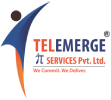AI and Data Science Is Being Used To Fight The Pandemic
Around 6 months since the first case of Coronavirus (COVID-19) was reported in China, the virus has spread to 210 countries and territories around the world. The number of confirmed cases are reported to be around 2,083,304 at the time of writing this blog.
While scientists and researchers around the world are studying the novel coronavirus to find a cure, technology has put up a parallel crusade to fight this crisis on various fronts. From dataset-management to make scientists’ work easier to building apps for public safety, AI (Artificial Intelligence) and data science are proving to be invaluable soldiers in the battle against this pandemic.
The Silence Before The Storm
Back in late-2019 when novel coronavirus was being thought of (or even dismissed) as a ‘Chinese thing’, Toronto-based AI start-up BlueDot had sounded the warning bell of a possible massive global outbreak.
On December 30, 2019, had issued an alert about a cluster of “unusual pneumonia” cases happening around a market in Wuhan, China. BlueDot’s AI engine collects data on over 150 diseases and syndromes around the world from sources such as the Center for Disease Control or the World Health Organization. Additionally, the BlueDot engine also searches for news reports and airline ticketing data from around the world. This information is updated every 15 minutes.
Using the massive data at its disposal, the BlueDot AI engine is capable of prognosticating an outbreak and spread of infections. Using air travel data, the system accurately predicted that novel coronavirus would spread to Bangkok, Seoul, Taipei, and Tokyo after its outbreak in Wuhan in China’s Hubei province.
BlueDot uses a mix of natural language processing, disease surveillance and analysis, machine learning to scour and sift data and human analysis to create its prediction reports.
Testing The Waters
Even in the very early stages, when the Chinese government was struggling to contain the outbreak, Chinese tech companies including tech giants like Alibaba, Baidu and Huawei, were amping-up their healthcare tech initiatives.
Around February-March, Alibaba developed an AI system that could diagnose coronavirus in patients’ chest CT scans with 96% accuracy. As opposed to manual testing which takes around 15 minutes, this system could do it within 20 seconds. Using ML (Machine Learning) technology on images and data from 5,000 confirmed coronavirus cases, Alibaba’s AI has reduced the workload on medical practitioners across China who have been overwhelmed with patient-surge since December.
Similarly, Terra Drone, a Japanese company, ensured that medical and other supplies were safely transported from Xinchang County’s disease control centre to Xinchang County People’s Hospital without any human involvement, to avoid the spread of infection. Terra Drone’s KazUAV drones are also helping the police monitor Kazakhastan’s capital Nur-Sultan for violations of lockdown policies.
The Inside Story
While lockdowns and social distancing can help in containing the outbreak, it may not be enough to stop the spread completely. Unless and until scientists and researchers find a vaccine for the virus, a repeat of this pandemic cannot be ruled out, even if the curve is flattened.
AI could be enormously helpful for vaccine discovery. Scientists have been working on proteins (known as amino acids) since the 1950s. The enormous databases of proteins available must be scoured through and studied to understand the protein behind the virus. Screening through millions of chemical compounds via an AI system would be a lot more fast and reliable compared to human efforts. Understanding the three-dimensional shape of the proteins in COVID-19 could be key to finding vaccines against it.
On these lines, Google’s DeepMind division has developed AlphaFold, a deep-learning system, focussing on predicting protein structure for COVID-19.
The Larger Picture
In March, The White House Office of Science and Technology Policy, Allen Institute for AI (AI2), Chan Zuckerberg Initiative, Georgetown University’s Center for Security and Emerging Technology, Microsoft Research, Google Scholar, Semantic Scholar, and the National Library of Medicine at National Institutes of Health teamed up to create CORD-19 (COVID-19 Open Research Dataset). CORD-19 has brought nearly 51,000 research papers about COVID-19 under a single umbrella. These papers would be accessible to AI researchers who can use it to create ML models that can help scientists find the information they need.
In our previous blog, we discussed how the Indian government’s app AarogyaSetu alerts a user if they have crossed paths or come in contact with an infected person. The app also comes with a tool for self-testing questionnaire and self-isolation advice.
It is a little ironic that Artificial Intelligence and Machine Learning which until last year were associated with security concerns and loss of jobs are now at the forefront of one of the most important battles being fought in modern times. The battle is not over yet, and AI, ML and big data will continue to play an important part in making the victory over this virus a fast and permanent one.

